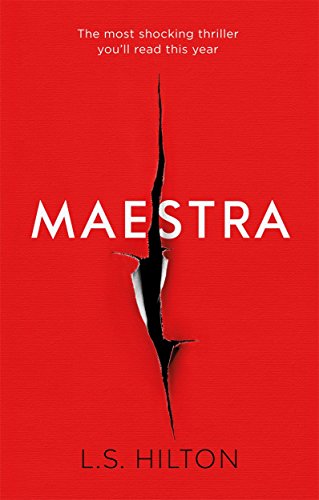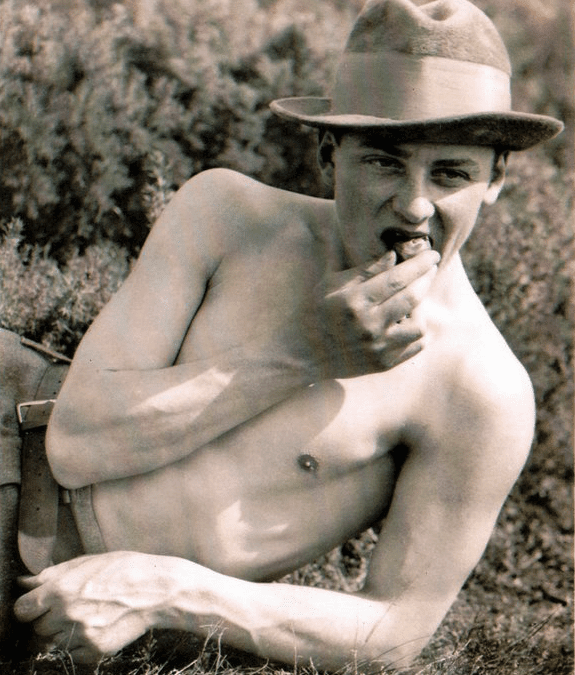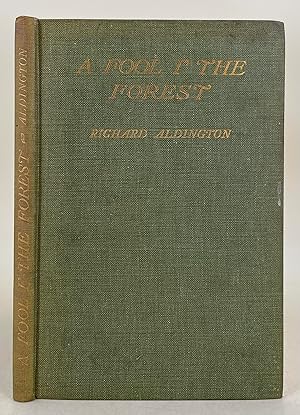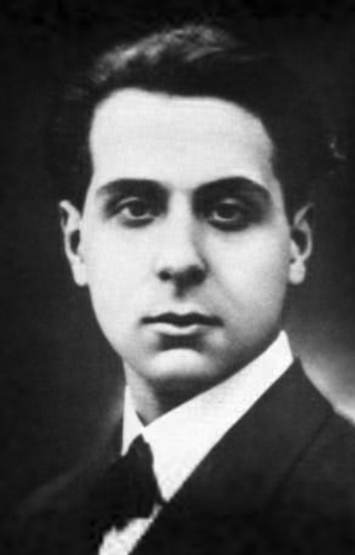Review of the Novel Maestra, by L.S. Hilton
The review that appears below is a pre-edited version of an article that appeared in Standpoint magazine in May 2016 here.
Maestra, Zaffre Publishing, 2016, 343 pp.
Maestra is a spectacular act of revenge – on the English upper class, and on men. This revenge is more direct on the part of its protagonist; less so on the part of its novelist; and it is accomplished in a manner coldly furious, exuberant, wish-fulfilling, and, in its own way, snobbish. Whatever the truth of Hilton’s claim that ‘I actually live a really boring life. My hobbies are reading and cookery and I dress like a homeless person most of the time’, the life of her mind is far from this.
It should be acknowledged immediately that it ends: ‘To Be Continued’, and opens a projected trilogy. Every word in this review might have the carpet pulled out from under it by the successor novels – especially, as is the way of these things, the last one. But in that case, they would be pulling out the carpet from under this novel itself – which I would like to bet would resist pretty fiercely, since it is aloof, independent-minded, and has ample wherewithal to defend itself from redemption. So: watch out for the false ending, heroine Judith Rashleigh! But no need for paranoia. Odds on you’ll survive and thrive to be an immaculately-dressed octogenarian, hiring the very best gigolos, and with your very own collection of Artemisia Gentileschis.
Chronic rage is a strange beast. It can be generated by one terrible circumstance, or a series of adverse conditions. But its other parent is a certain personality type, which is capable of sustaining it. It is often egotistical and always unwise – destructive of self and others, of quality of life, and of life itself – but is rarely without a worthy target. It usually pertains to something very wrong with the world – manmade and curable or otherwise. Dostoevsky’s anti-heroes, such as Ivan Karamazov, have a sharp perception of the latter – those things that make the very conditions of human life outrageous.
The rest of us may be more or less aware of these wrongs, but we do not take them to heart – have not had personal cause to, or cannot bear to, or have lost the energy to, or with a great moral effort have overcome having done so. In one of the most famous passages of George Eliot’s Middlemarch, the narrator reflects that: ‘If we had a keen vision and feeling of all ordinary human life, it would be like hearing the grass grow and the squirrel’s heart beat, and we should die of that roar which lies on the other side of silence. As it is, the quickest of us walk about well wadded with stupidity.’ In context, this concerns compassion. But keen vision and feeling can perceive injustice as well as the pain which it can cause. And the same applies. Most of us do indeed walk about well wadded with apathy about injustice. Society could not function otherwise. Beware of those who are stripped bare.
Judith Rashleigh, protagonist of Maestra is, let us say, thinly-clad. Some of her rage results from, or is at least facilitated by, an unstable upbringing by an indifferent, alcoholic single mother. Late in the novel she tells a lover how she was sexually abused by one of her mother’s boyfriends – then bursts out laughing at his credulity of this hackneyed story. So that’s a maybe. But it is certain that her home life was in many senses poor. She was bullied at her Liverpool school by other girls, in part, presumably, because she stood out as bright and swottish – a type of anti-intellectual bullying which, in England, is connected to the class system. After rejection by her own kind as an intellectual, and having escaped into ‘an environment where confession to an interest in anything apart from fucking reality shows wasn’t an invitation to a cracked jaw’, she is patronised and exploited at the London auction house where she works after her Oxford degree, as a ‘Northerner’ of the wrong class and accent.
By the time that she is fired for looking too closely into an art fraud that her boss is in the process of facilitating, she has come to the conclusion that meritocracy (she is bright, gifted and hard-working) will never cut it; that she will never be on the inside. ‘Somewhere inside the house was a hidden casket of Alice in Wonderland keys that I would never possess, keys that unlocked ever tinier gardens whose walls were all the more impregnable because they were invisible.’ The names of the novel’s Parts are directed at this concept of belonging – respectively ‘Outside’, ‘Inside’, ‘Outside’, ‘Outside’, and ‘Inside’ – a summary of the novel which both reprises the sexual activity which Judith particularly enjoys, and indicates that by the end she has after all, in some sense if not the English aristocratic one, made it.
Her rage at the privileges conferred by hereditary wealth is accentuated by her education, which gives her both analytic clarity about derogations from meritocracy in the way the world works, and the opportunity to feel those derogations in application to herself. Without an Oxford degree she would not be permitted close enough to the London art world to feel excluded by it. She is, therefore, an Angry Young Woman. One of Jimmy Porter’s problems was that he was of a generation of working-class men which had been university-educated but not de-classed, and which felt the contradiction keenly. In the same year as Look Back in Anger, Evelyn Waugh (responding to Nancy Mitford’s essay ‘The English Aristocracy’, itself responding to linguist Alan Ross’s essay ‘U and Non-U’) characterised this generation thus: ‘I could make your flesh creep by telling you about the new wave of philistinism with which we are threatened by these sour young people who are coming off the assembly line in their hundreds every year and finding employment as critics, even as poets and novelists.’ This caricature has astonishing relevance to a novel of sixty years later. Just one year later, in 1957, John Osborne had parodied the same sentiments thus: ‘then these ungrateful little bastards shout their loutish heads off and bite the hand that feeds them.’ Maestra does some biting, and some shouting.
Judith gets a certain way up in the English class system, and reaches an impasse: ‘I read hundreds of novels, scouring them for details of the customs of the strange country of class, of how to speak, the vocabulary that marks out those who belong to the invisible club from those who don’t. I worked endlessly at my languages: French and Italian were the tongues of art. I read Le Monde and Foreign Affairs, Country Life and Vogue and Opéra Magazine and Tatler and polo magazines and Architectural Digest and the Financial Times. I taught myself about wine, about rare book bindings and old silver: I went to all the free recitals I could, first for duty and then for pleasure; I learned the correct use of the dessert fork and how to imitate the accent on which the sun has never set.’
Waugh would have been amused, both at Maestra as a novel in itself, and at Judith’s attempts to learn the ways of the ways of the upper classes from novels: ‘Their novelists seem to be aware of a rather more expensive world than their own – bars in which spirits are regularly drunk in preference to beer, loose women who take taxis, crooks in silk shirts – but of the ramifications of the social order which have obsessed some of the acutest minds of the last 150 years, they know less than of the castes of India. What can their critics hope to make of the undertones and innuendoes, the evocative, reminiscent epithets of, say, Tony Powell or Leslie Hartley?’ Maybe this novel, and Judith, don’t know those details (and Waugh himself admits that they are of small importance), but they do know a great deal about ‘loose women who take taxis’ and ‘crooks in silk shirts’.
Understandably, Judith gives up trying with the English, and launches herself onto the sea of Eurowealth, where structures are less rigid, and Steve ‘the hedgie’ (on whose yacht she spends several weeks of anxious hedonism) is of no sharply or importantly different order to that of the hereditary Euro-jeunesse-dorée among whose yachts he docks his own. Here ‘the vocabulary that marks out those who belong to the invisible club from those who don’t’ is not linguistic – they are after all an international bunch – but the vocabulary of brands.
Judith’s social climbing is tracked by the brands that she buys, and facilitated by her ability to recognise brands as worn by men – the ‘shoe and watch check’, as she and her girlfriends call it. One can only hope that Hilton was paid for product-placement, in which case she has already earned riches indeed. If not, then she will be for the film of the novel, for which the rights have been sold. In this sense, as in others, the novel enacts what it describes. Not only is every item of clothing, every pair of shoes, and every watch branded, but so are pieces of furniture. At a moment of supremely high tension, Judith’s first person narration mentions a brand of chair. The ‘U’ (as opposed to ‘non-U’) of wool is ‘cashmere’ – a word used more than most others in the novel, frequently with a brand name attached.
Brands are of course markers of what Thorstein Veblen called ‘conspicuous consumption’ – a sign of money-without-responsibility, which is itself a feature of more recent history (The Theory of the Leisure Class was published in 1899). In this novel, they are conspicuous indeed – to those who can a) recognise them when seen, and b) assess their relative status. A reader who does not know their Laboutin from their Lanvin will be as at-sea in this novel as the working-class reader of the ‘undertones and innuendoes […] of, say, Tony Powell or Leslie Hartley’. And if the latter is a world of snobbery that Judith has given up on, brands, being more accessible, are one that she enthusiastically embraces, with only a slight, untroubled awareness of their absurdity.
The contrasts to Sofia Coppola’s 2006 biopic Marie Antoinette are instructive. First, the life of the born-aristocrat at Versailles, with its macaroons, infinite variety of (non-branded) dresses, vast wigs, and louche girl- and boyfriends, is presented as a whole lot of fun. By contrast Judith, though she has no illusions about the grind that a low-income life in London can be, gives very little sense that modern mega-wealth is actually fun at all. Slogging round brand shops and mega-yachts seems to bring her very little pleasure, and her delight in her immaculately-branded clothes and Parisian apartment is mainly made up of relief that these are no longer the clothes and flat of her old life. Which begs a question.
Nonetheless, Marie Antoinette more than Maestra is a satire on today’s mega-rich (as the rock music soundtrack, American actors, and pair of Converse trainers included in a panning shot of eighteenth-century shoes, indicate). The excess may be delightful, but it is also ignorant of its conditions of existence, and unsustainable. The film gives a sense of why the Revolution happened. Maestra, by contrast, has no hint of a socialist consciousness. The victims of the hedge funds’ carving up of the world are glimpsed or considered no more than are the victims of the Mafiosi to whom Judith sells a fake Stubbs. The politics are of meritocracy in a cut-throat world – and more than a little Thatcherite.
The merits on which Judith climbs are female attractiveness, astuteness, and cold-heartedness, all of which she has in abundance. The first is crucial. St James or Cannes, she enters a world in which women sell their attractiveness, and men sell access to the trappings of their wealth, plus shopping expenses. She therefore has it easier than the ‘Talented Mr Ripley’, who makes it through his talent of impersonation. Sufficiently-attractive young women need no unusual talent in order to enjoy the same yacht-lifestyle.
Part of Judith is happy with this deal. Certainly, she more cheerfully prostitutes her body to the obese businessman who first takes her to the Riviera than she prostituted her mind to the employers who despised her. She doesn’t have the maths-brain to be a hedgie, and if Steve’s brains buy him a yacht, which Judith’s art-historical brains do not, this is not an injustice which seems to exercise her. If men more than women have the brains and/or will to make a successful hedge-fund manager, good luck to them, and let any women whose brains are less marketable at least sell their looks for a stay on the yacht. She enjoys sex anyway, even with men who are sub-optimally-attractive, which helps in operating in this world.
Yet, in another part of herself, she hates the power-imbalance – the fact that (unless a marriage is managed; and to her credit Judith never contemplates managing it) men-the-buyers can drop women-the-goods at a moment’s notice. The women’s life on the yachts is anxious and contingent, and, though the novel doesn’t mention it, time-limited, because dependent on beauty. This intensifies a resentment against men which, if it does not originate in childhood rape, certainly goes back as far as an episode in which Judith is sent by her auction house to evaluate the collection of a retired Colonel in St John’s Wood. This man is – as she is not forewarned – a would-be rapist. (She escapes by biting him, and threatening to film his assault on her mobile phone). In order make the kind of money denied to her by her employers, she turns to a bar in St James’s where the waitresses are paid by ‘tragic paunchy men’ for their company alone (not for tolerating assault), and, once she is sacked from the auction house, agrees to go with her most regular bar client to the French Riviera for £3,000.
Her resentment against men resembles her resentment against the class system, in that she identifies in it a derogation from meritocracy – or rather, a treatment of arrogance, superior physical strength, and a love of dealing in numbers, as merits worthy of particular social and financial reward. That the novel was repeatedly rejected by middle-aged male publishers, as Hilton has mentioned in interview, is not surprising: ‘You could tell in their rejections that the book had kind of gotten under their skin, it bothered them. I felt quite pleased that I’d succeeded in putting the wind up the old man.’
The novel’s murders – Judith commits four – are in part a revenge for her accumulated resentments. But only indirectly. She kills an art dealer (in order to steal the fake Stubbs which she sells on to the mafia); her girlfriend (who has betrayed her to a detective); the detective (who is about to turn her in to the police); and the owner of a Parisian sex club (who gets in her way when she is trying to escape). Although three of these are men, none are upper class (except perhaps the owner of the club, who had always been kind to her). Her murders are not even particularly pragmatic. Only the first helps to make her money; the others are all getaway murders. She kills, first and foremost, because the world makes no moral sense to her, and she has therefore lost all moral sense. She also finds that she is good at it (at least in this world of heterodox and slow detectives), and gains a taste for it. She is almost completely psychopathic (she retains real feelings of friendship for Dave, a porter at her auction house, who is sacked along with her for investigating the fake Stubbs. He, like her, is working class, highly intelligent, and has a strong commitment to art which goes under-appreciated and under-paid in London’s art world). But by and large, the springs of morality are broken in her.
With the murders the novel also leaves the realm of realism, which up until then it had comfortably inhabited. Serial killers exist, but they cannot write the narrative that Judith narrates, from wherever and whenever (as we may discover by the end of the third novel) she is doing so (an asylum? Malibu Beach?). Nor do killers like Judith get away with their murders for as long. The fact that her name is that of the woman who kills Holofernes in the Apocryphal story (painted amongst others by her female-artist-heroine, Artemisia Gentileschi) is the kind of felicity that art has the freedom to confer – and her own murders also exist within this freedom.
This is the more true of art which contains other art within itself, since the self-consciousness of meta-artistry always disrupts realism. This is apparent in that other art-thriller novel, Michael Frayn’s 1999 Headlong, in which the ‘real-life’ plot, also centring on an art fraud, intertwines with the historical reality with which a painting is supposedly concerned.
But there is also, in Maestra, a touch of Jonathan Coe’s 1994 anti-Thatcherite novel What a Carve Up!, which concerns the writing of a biography of a maleficent family by a man who has suffered from that family. The plot is of (heightened) realism until the novel’s final section, which reprises the dénoument of the 1961 mock-horror film which gives the novel its title. The family members are gathered together in a spooky house, and are killed off one-by-one in a manner appropriate to their various crimes. One of the villains, as it happens, is an art-dealer who sexually harasses female artists who come to him for advancement. The tone is one of hysterical laughter and wish-fulfillment. Justice, in a morally-mad world – also that of Agatha Christie’s And Then There Were None – is done. But Coe’s novel, like Christie’s, is aware of the boundaries that have been crossed. The biographer discovers that he is in fact related to that family, and implicated in its guilt. In a spectacularly improbable plot-twist, he is killed in a plane crash by a mad great-aunt.
Maestra is far less concerned to be morally coherent, or poised, as a work of art. There is a kind of vengeful third-wave feminism, summed up in the title, at work – but even that does not strike a moral pose. Judith ends on a point of success, bumping into the boss who had sacked her, at the Venice Biennale. He does not recognise her, such is the elegance of her ‘cobalt suede Celine shift, her impeccable pumps’, which ‘existed in another dimension from Judith Rashleigh.’ He leers at her, but cannot follow her into the party to which she is going: ‘“No, er, NFI actually” No fucking invite. Oh Rupert. […] I took a glass and stood alone at the parapet, and looked at the waves, and they lifted my heart. To Be Continued.’
Like Tamburlaine in Marlowe’s play, she just keeps rising and rising, and betraying, and killing. It is in the nature of such arcs, as generally presented in art, that the hero – in this case a Scythian shepherd-turned-Emperor of Africa and Persia – must finally come crashing down. Yet he finishes the play at the height of luxury and success, marrying the daughter of the Egyptian King. The play was a giant, money-spurting success. And so there was a Part II, in which one again expects him to be brought down eventually, and again he keeps having successes, and killing and humiliating more people (one can imagine Judith getting her conquered men to draw her chariot to her next battlefield), and finally, he dies bequeathing the conquest of the remaining parts of the earth to his sons.
Admittedly, there is in the second Part some distancing of the play from the protagonist. As for Maestra, we shall see. Maestra and its heroine have conceived of success from the outset, following Tamburlaine’s precept:
Nature, that fram’d us of four elements
Warring within our breasts for regiment,
Doth teach us all to have aspiring minds:
[…]
Wills us to wear ourselves and never rest,
Until we reach the ripest fruit of all,
That perfect bliss and sole felicity,
The sweet fruition of an earthly crown.
With the film deal, an earthly crown seems in sight. A filmable novel can get into the same league as fine art when it comes to money-making at point of sale, only there is no equivalent of a fraud. People will read, and watch, what they like. In the case of Maestra, the masses, not the cognoscenti, will decide.
One thing that has made it the more marketable is the sex scenes. It was apparently at the behest of her agent that Hilton wrote a novel that would contain some, in the wake of the commercial success of the 2011 pulp-fiction novel of female masochism Fifty Shades of Gray. This will doubtless work, just as Judith being flexible about whom she has sex with plays some role in her success. But it does not actually play a crucial role with Judith; sex is generally incidental to her murders and frauds. Nor should it be central to whatever long-term success this novel has. It is not about sex, any more than Judith is. She merely happens to enjoy it in an intense and shallow way, and, when it happens, describes it straightforwardly. D.H. Lawrence once expressed impatience with those, like Freud, who brought sex into everything. Contrary to his reputation, he said that he wanted it to be kept under the table – not undescribed, but described only in its time and place. So it is in this novel. Judith does not crave sex all the time, just some of the time, and when she gets it, tells us. She likes her sex common-or-garden, if on the rough side; no non-consensual sex occurs; even at sex parties nothing particularly offbeat takes place; and the descriptions are not laboured.
Still – to second-wave feminists who think that the way to deal with a male-dominated world is not to don a bikini and leap onto a yacht, and/or to kill four people and set up an art gallery, this novel is deeply depressing. That, forty years on from the crest of its wave, the world of Maestra, and of the 2006 Audrey Tautou film Hors de Prix (in which a female gold-digger and the gigolo who loves her operate in the same hotel in the South of France) still exists. In his one-star review of Hors de Prix, Peter Bradshaw complained that ‘the whole movie slavers over bling, and has a nasty, dated air of pseudo-worldliness’. This novel does slaver over bling (whilst not actually, as noted, evincing much delight in it), and it does feel dated, but only because it seems bizarre that, as it once was, it still is now. And shall forever be? This is, after all, also a novel that testifies the relevance to 2016 of Nancy Mitford’s Noblesse Oblige. To say that this is the world’s fault is also to admit that it is, in small part, the fault of the Judiths of the world, who perpetuate the status quo by chasing what that world chases, and getting it where it can.




